The People Also Ask (PAA) feature is one of the most visible elements of a modern SERP. They are displayed so often and in such a great location that earning a spot in a PAA could put you in front of a lot of eyes.
We put together a list of more than 1 million keywords to learn more about how PAA boxes show up in the SERPs and to determine if it’s worthwhile to pursue ranking in them.
What is “People Also Ask” in search results?
People Also Ask is a type of search result that displays questions related to the current search query. When you click to expand a question, you’ll usually see a paragraph of text containing an answer and a link to the webpage hosting that answer. Often, you’ll see images, bulleted lists, numbered lists, tables, or videos.
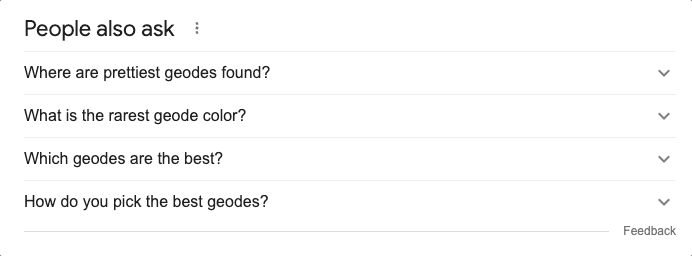
After you’ve clicked one question, the feature will generate even more questions. If you feel like killing time, keep clicking to expand questions and you’ll see what we mean. Rumor has it the questions go on forever.
We researched over a million SERPs with the Nozzle keyword rank tracking tool and found a lot of interesting things worth sharing about PAA boxes.
How Prevalent Are PAA Boxes and Where Do They Appear?
We looked at 1,212,665 desktop SERPs and found that a People Also Ask box appeared 78% of the time. On mobile, that percentage was 77%.
On desktop, PAA very rarely appears at position one (.0048% of the time). It appears at position two 50% of the time, position three 16% of the time, positions 4-6 24% of the time, and positions 7-10 9% of the time. On mobile, percentages are roughly the same.
How many questions typically show up in a box?
Over 80% of the time, 4 questions show up in a PAA box. A 3-question box is less common (10%), and 2 questions are even less (6%).
Less than 1% of the time, two PAA boxes will show up somewhere in the SERP. This could be two boxes of four questions, one four and one three, or one four and one two.
PAA vs. Featured Snippets
On desktop, comparing People Also Ask to another popular search feature, Featured Snippets, shows that Featured Snippets appeared on 30% of SERPs (78% PAA vs. 30% FS). On mobile, it’s 77% PAA vs. 26% FS.
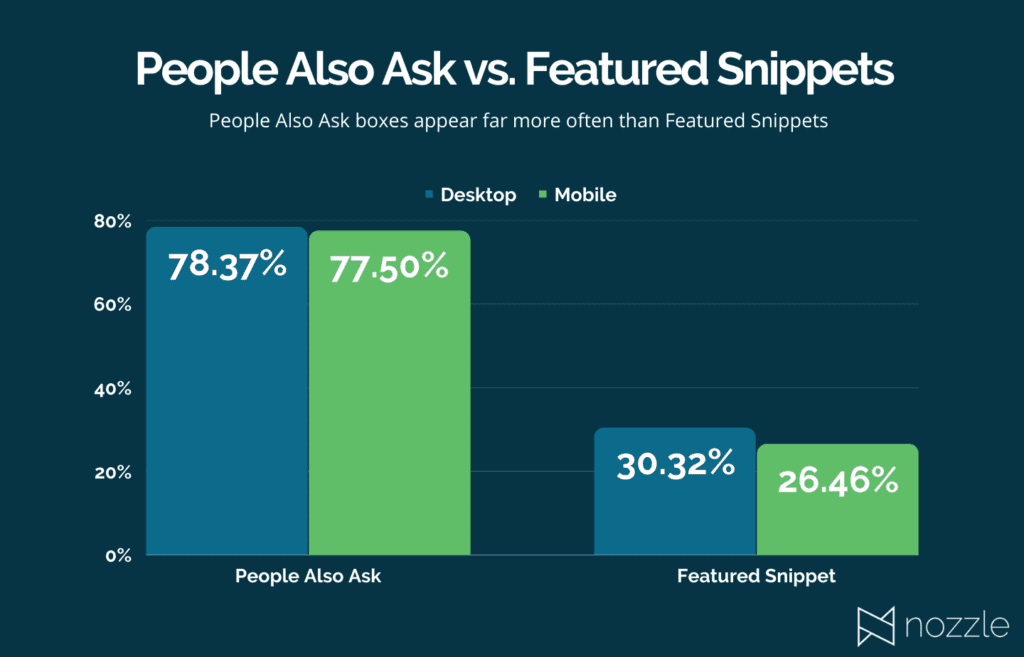
Should you try to rank in PAA? Is there any benefit?
In our study of 1,212,665 desktop SERPs, when a PAA box appeared, it ranked in position two about 50% of the time (the percentage was about the same on mobile). While the exact placement of a position two result will vary depending on the SERP (ads vs. no ads, featured snippet vs. no featured snippet in position one), it will usually sit above the fold. If it does not, it will be close.
Regardless, PAA boxes occupy a highly visible space in the SERP, so earning a place in one puts a link to your site in a valuable spot.
Other considerations
When the same question appeared in a PAA box across different SERPs, the answer would usually be the same. This means that once you earn a spot in a PAA box, you can count on being there for multiple search queries.
We also found cases where a page ranked in PAA boxes for related questions. For example, this page appears as the answer to the questions “Do mice make tracks in the snow?” and “What do mouse prints look like in the snow?”.
Drawbacks
When the answer to the searcher’s question doesn’t require a lot of context, they can get all the information they need from the few sentences displayed in the PAA box. In other words, there’s no need to click through to the page that provided the answer.
A common frustration in the SEO community is that as Google displays more and more content on the SERP, searchers’ needs are fully satisfied without having to click through to websites.
Less significant, but still the reality is that from a PAA box, a searcher has to make two clicks to reach a website: one to expand the PAA question to view an answer, and another to click through to the website.
This additional click could mean that you’ll get fewer website visitors from a PAA question than a featured snippet or a regular organic result.
Benefits Outweigh Drawbacks
Although some searchers may not click through to your website, you still occupy a very visible space on page one (see the screenshot below where the PAA box fills nearly half of the visible area). Attempting to rank in PAA will likely improve your overall SEO efforts. It means that the search engine considers the quality of your content good enough to answer important questions. And that means you will have a higher likelihood of ranking in non-PAA spots.
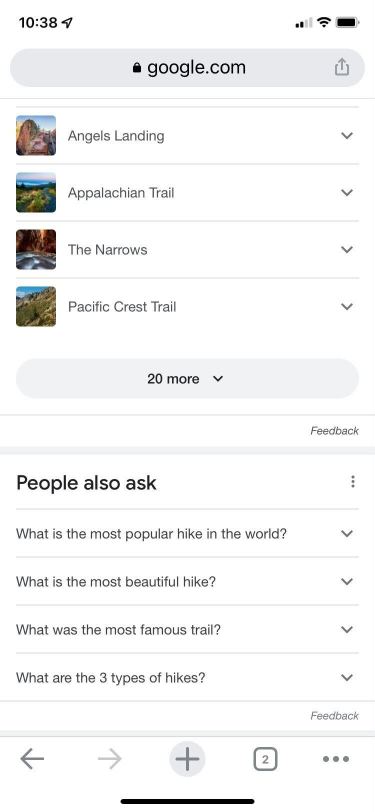
How to rank in People Also Ask
Where do you start? How do you know which questions to focus on answering, and what do you do to prepare your content?
1. Start with your target keyword list
First, you need to know which questions to write answers to.
The best questions are those that your audience is asking often, and are displayed frequently in the PAA box.
How do you find the questions your audience is asking?
If you’ve been working to improve your website’s SEO, you already have a list of target keywords. If not, do keyword research and build your list of ideal keywords. These don’t have to be formatted as questions, but they can be.
You can probably think of a lot of relevant questions related to your keyword list on your own, but you’ll need the help of a tool at this point to find questions you’ve never thought of.
2. Expand your list
Second, add your list of keywords to Nozzle’s PAA tool.
Nozzle will give you a list of People Also Ask questions that are related to your keyword set. If you want a bigger list, refer to Nozzle’s PAA Expansion Method. There are more questions out there than you can possibly think of on your own. This is a great way to maintain a constant flow of content ideas.
3. Sort the list to see popular questions
Third, sort the list by “# of SERP Appearances” to see which questions appear most often when people search your keywords.
Decide where to answer the questions
Now that you have a list of questions, you’ll need to decide where to answer them.
When selecting PAA answers for a SERP, Google will often choose from a webpage that already ranks on page one of that SERP. This screenshot shows a search for the phrase “what does an oak tree look like”. The first PAA answer was taken from the result right below the PAA box:
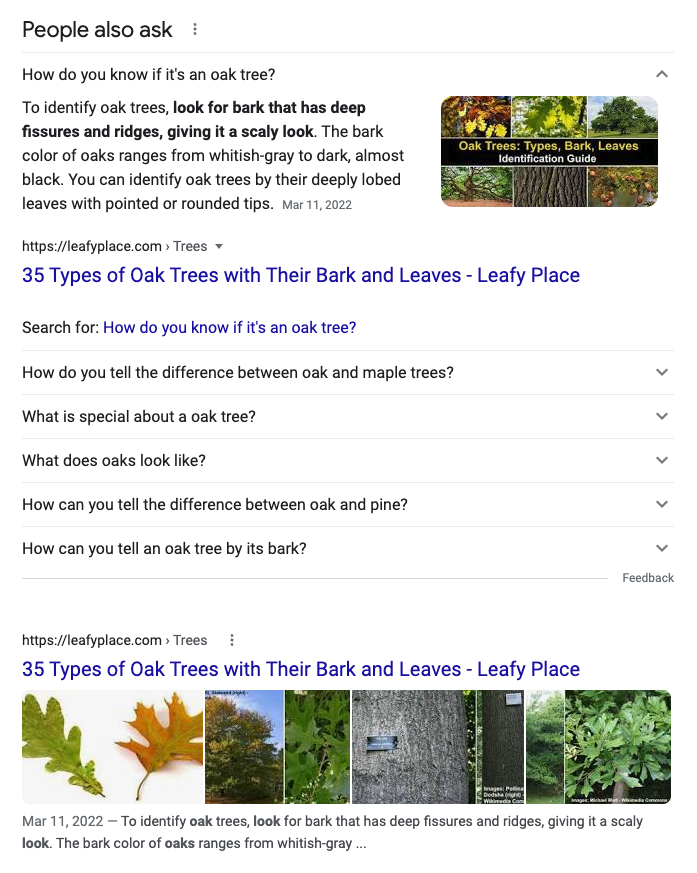
It’s been said that a page MUST rank on page one in order to qualify for ranking in a PAA box. Our data shows that this is not the case. We’ve found instances where the question in the PAA box is from a website that doesn’t rank anywhere on the first, second, or third page.
Notwithstanding the exceptions, we recommend that you check to see If you rank on the first page of results for the tracked phrase that generated the question. If you do, try to answer the question on the ranking page.
This is easy to check with Nozzle’s PAA Content Idea Report (let us know here if you want your own).
Use your PAA Report to find page one rankings
Go to page two of your PAA Report. The table on the left shows all the questions generated from your initial list of tracked phrases.
Click on a question around which you’re going to create content.
The table on the right now shows you phrases from your original list that rank, at what position, and what page ranks. If you see pages ranking in positions 1-10, those are the places where you’ll want to write answers to your question.
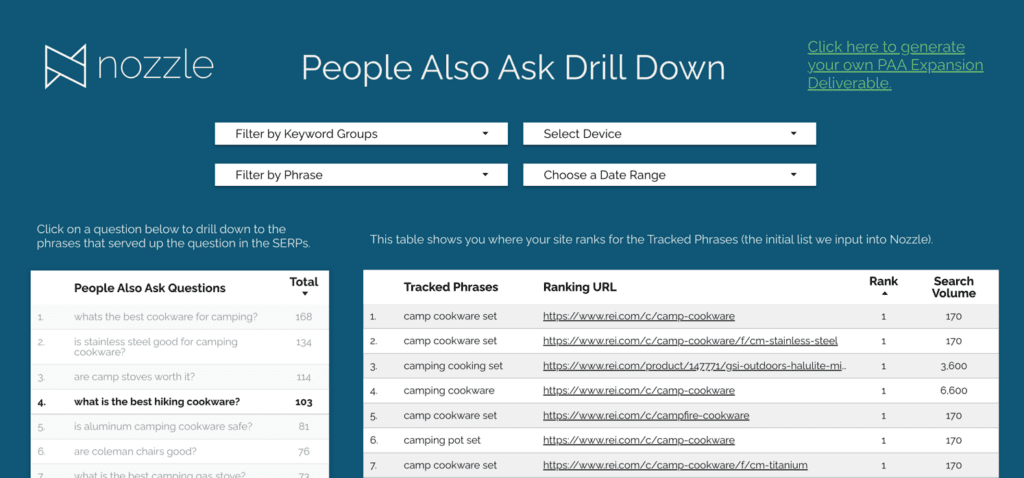
If you don’t rank on the first page, you could still potentially qualify as a PAA answer. In this case, see if you have a page that ranks, but on page 2 or beyond. Work on improving that page’s overall SEO in addition to answering the question.
How to write content and format a page so that it appears as an answer in PAA
Start by Googling the tracked phrase you’re interested in and look at the PAA answers that are already there.
Pay attention to how answers are formatted.
Do you see an unordered list, a numbered list, a question/answer paragraph, or something else? That’s a clue as to what format Google prefers in the space. You’ll have an easier time ranking if you use that format or something similar.
Existing PAA answers are also your guide on how to write your own content. Google your target phrases and observe which paragraphs were chosen for PAA answers.
How is the chosen paragraph structured to be able to answer the question effectively?
It would be difficult to provide a proven formula, but as you observe more and more PAA answers, you’ll see what the winners are doing and you’ll be able to improve upon that.
How can you answer the question better than the current top result?
Google has made a determination that the answers you see are the best in the context of the query. They’ll usually provide a very direct and concise answer to the question, but you will see some answers and know you could write a better one.
How many XYZ are there?
If the question is a “how many x are there?” type, answer with the exact number of things there are, then go into an explanation of the nuances if you want. You’re looking to provide a succinct answer that Google can display in a small space.
You can elaborate, but the succinct answer has to come first.
Google the phrase “rock subgenres”. The first PAA question is “How many subgenres of rock are there?” The answer has the number right there in the title.
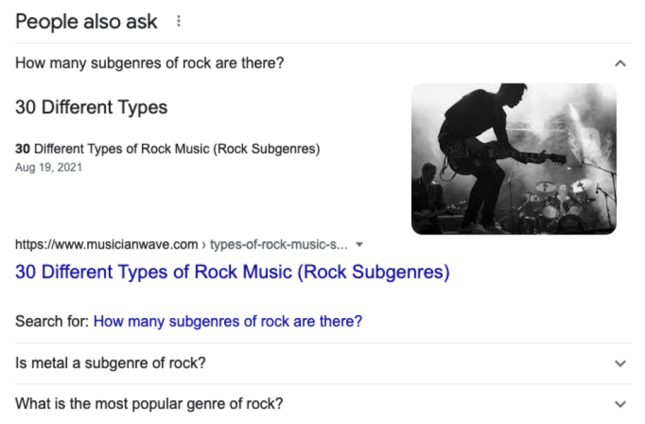
Google the phrase “list of coffee varieties”. The first couple of PAA answers includes figures and names in the space of a paragraph. You could get more context if you clicked through to those websites, but the idea is that Google found a paragraph that answered the question sufficiently to include as a PAA answer.
Could you provide a better answer? Probably.
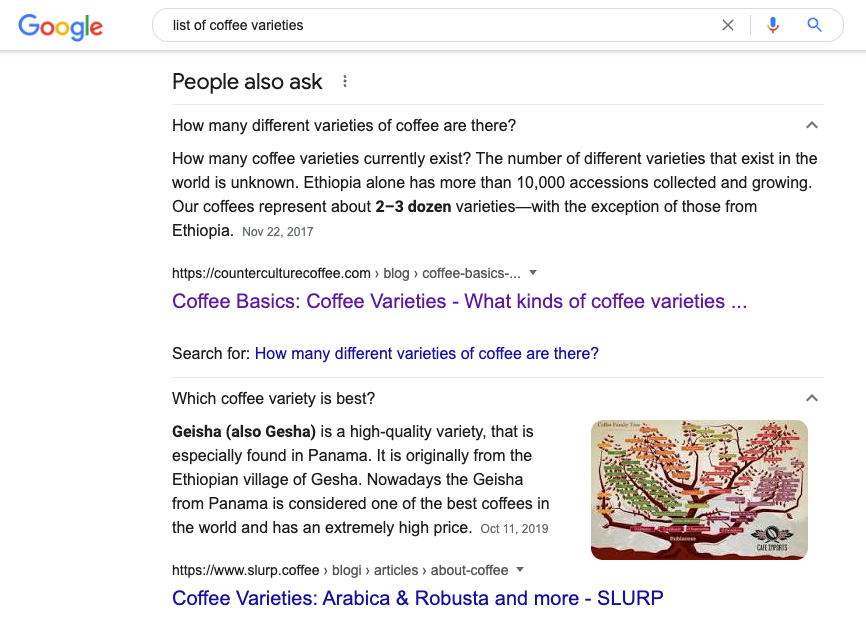
What is the best XYZ?
If the question is a “what is the best x?” type question, consider providing a bulleted list of the best things, then elaborate in subsequent paragraphs.
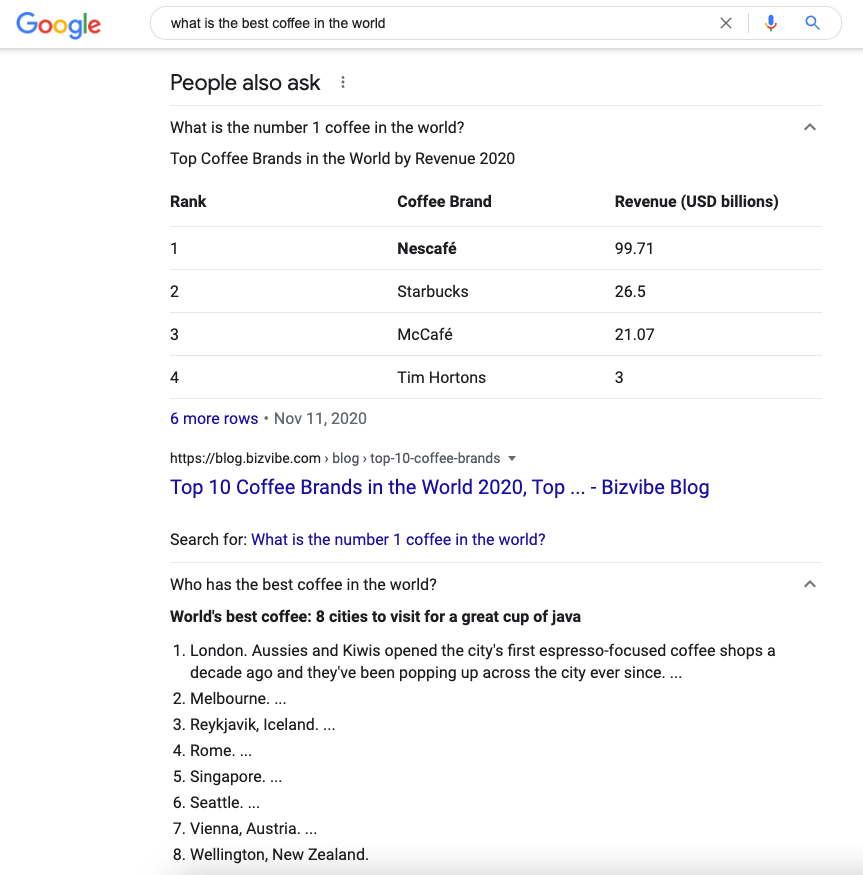
Is XYZ good?
“Is x thing good/worth it?” A pro/con article might be good, with a summary of why the thing is or isn’t worth it.
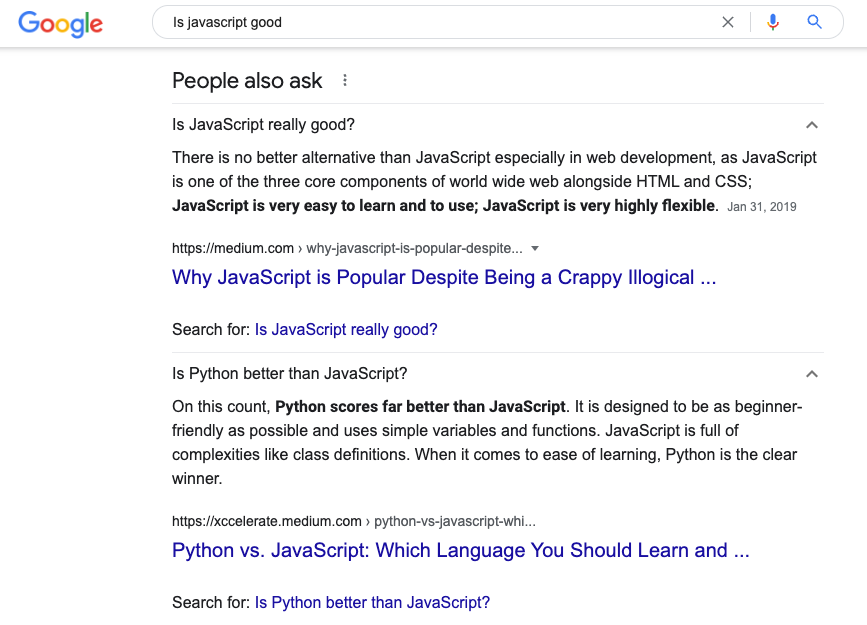
What is an XYZ?
A “What Is” question is pretty straightforward. Briefly define the thing as well as you can. See if you can briefly include how the thing is used, an example of the thing, etc.
Add as much context as you like in supporting paragraphs, but keep the answer/paragraph that you want to show in PAA succinct.
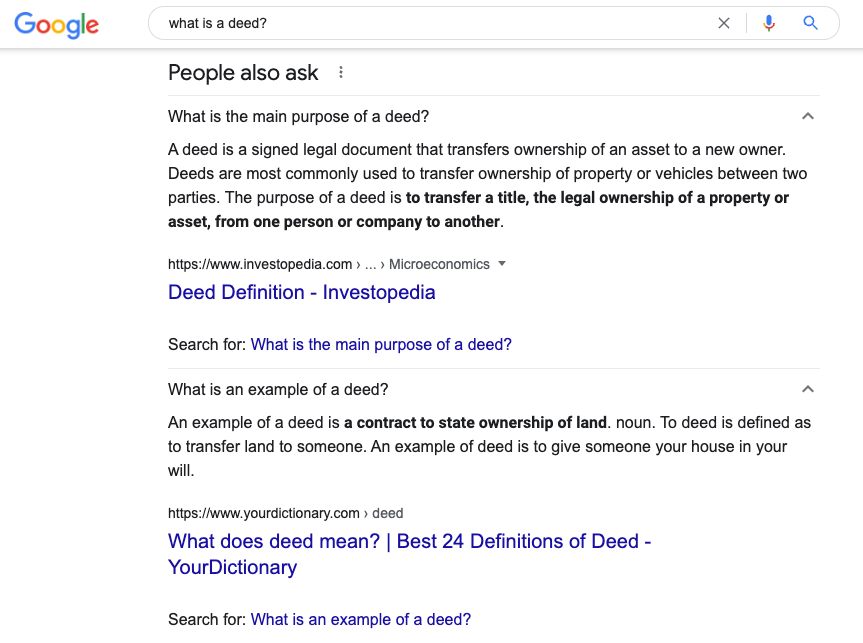
Conclusion
People Also Ask boxes appeared more than 70% of the time in the SERPS we analyzed, making PAA a very common and important search feature that is seen by a lot of users. Discover more PAA stats here.
You can gain insights into the questions Google is showing in PAA boxes then and work to get your website’s content featured as an answer to achieve more visibility and potentially more traffic to your website.
